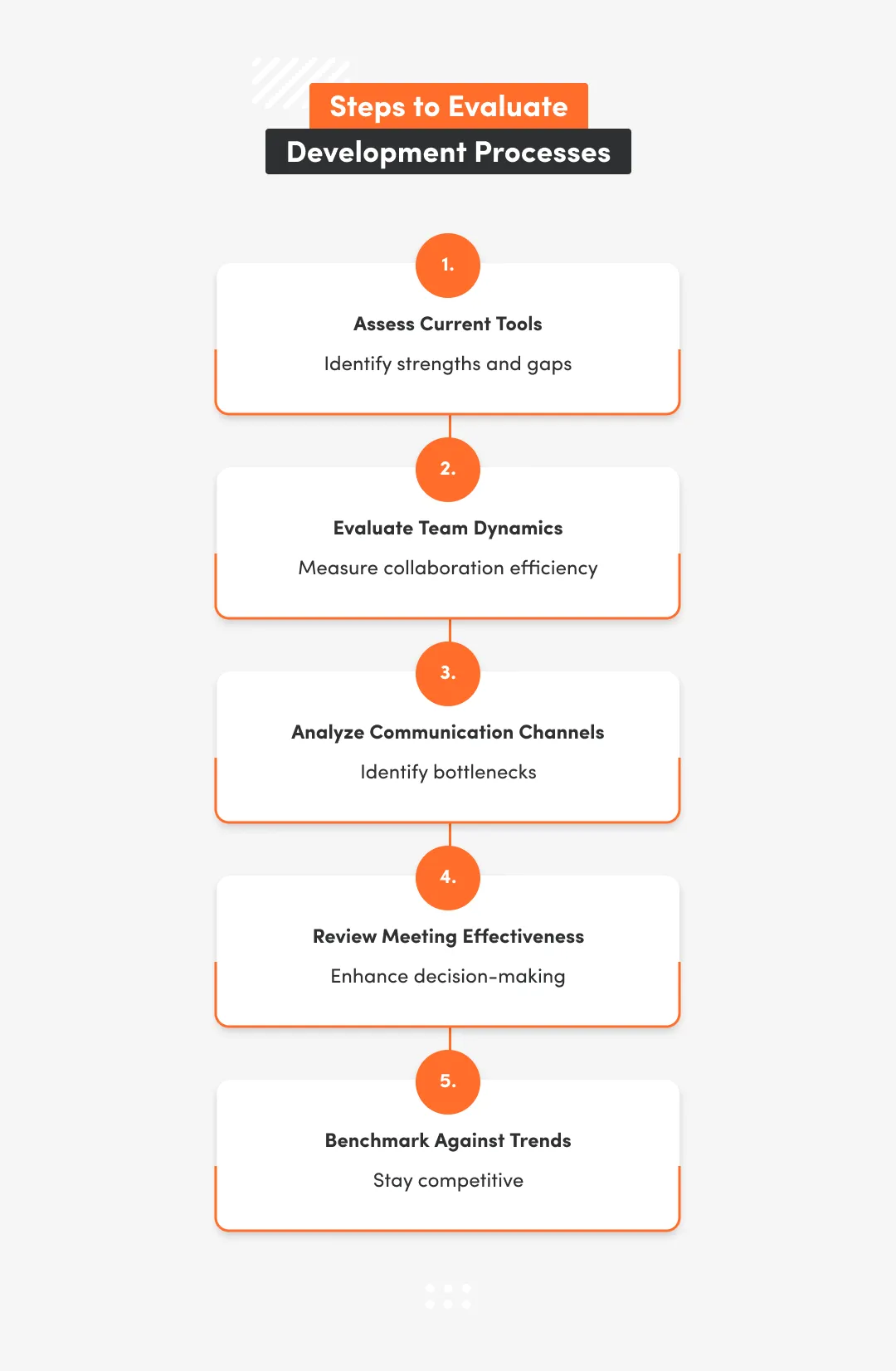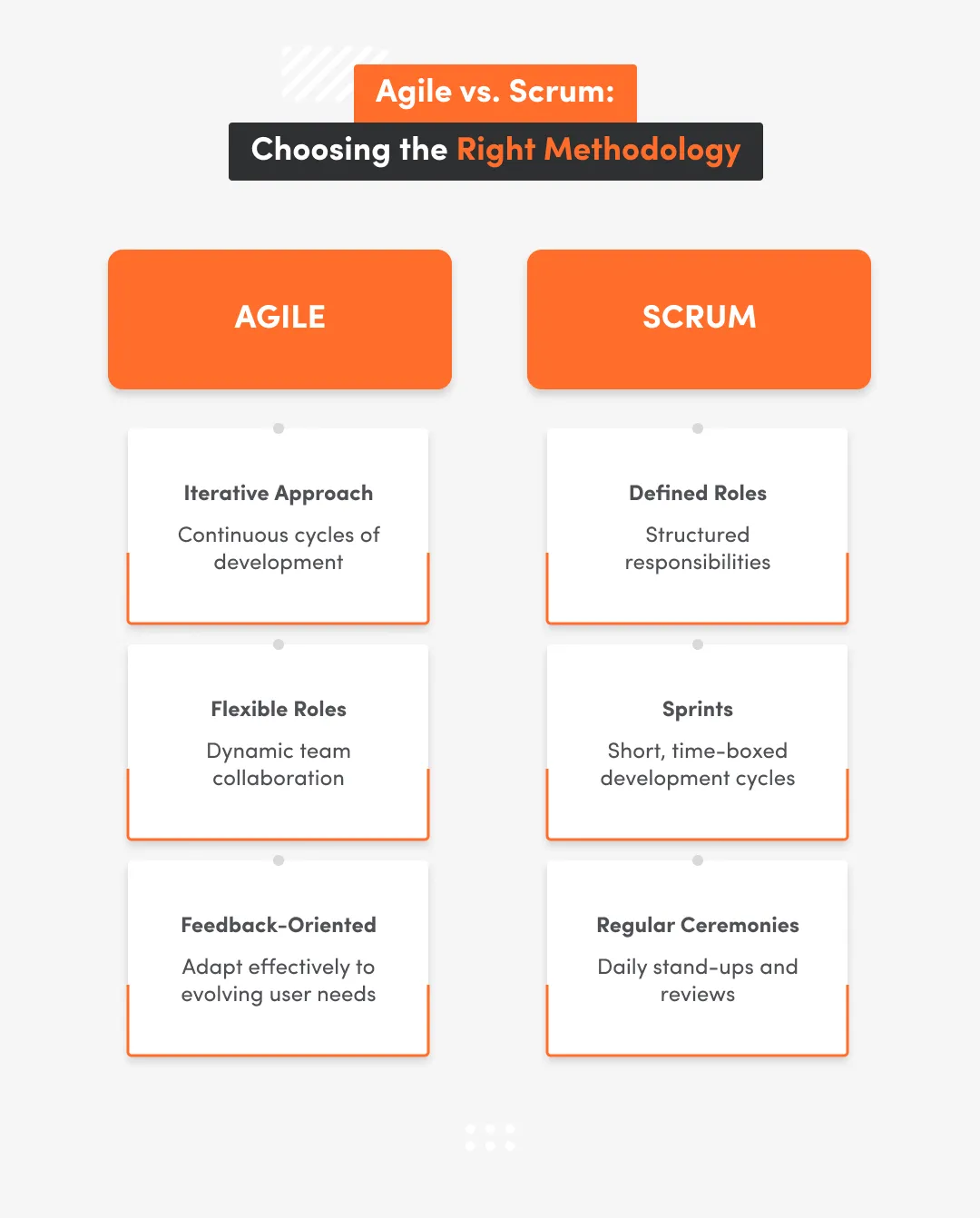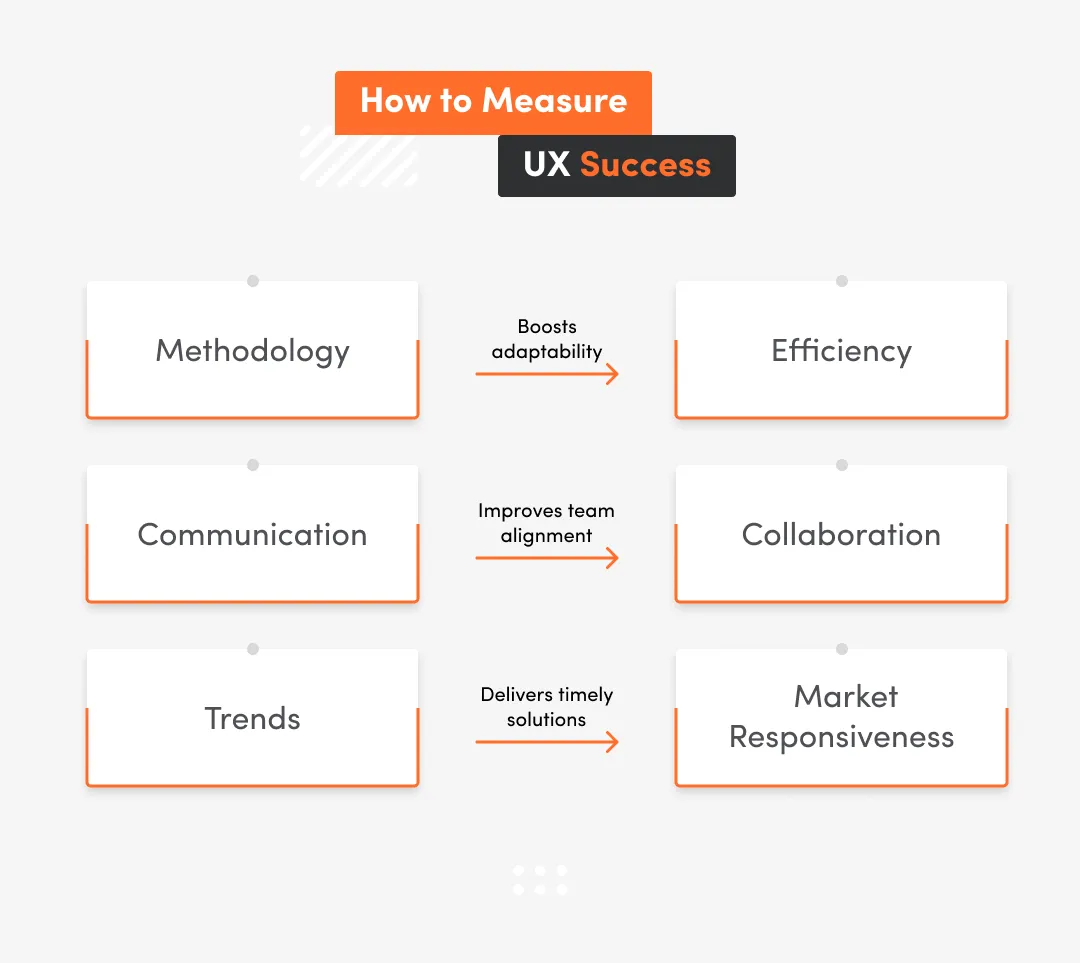 Evaluating the software development process is vital for organizations that want to improve efficiency and meet business goals. The software development field is changing quickly, making it necessary to assess methodologies, tools, and team dynamics. This evaluation looks at various aspects, including communication, meeting effectiveness, and overall workflow, to find strengths and weaknesses in the software development lifecycle.
Evaluating the software development process is vital for organizations that want to improve efficiency and meet business goals. The software development field is changing quickly, making it necessary to assess methodologies, tools, and team dynamics. This evaluation looks at various aspects, including communication, meeting effectiveness, and overall workflow, to find strengths and weaknesses in the software development lifecycle.
Choosing the right software development methodology is one of the most important parts of this evaluation. Common methodologies like Agile and Scrum focus on iterative development and teamwork among diverse teams. Agile methodologies, for example, provide flexibility and adaptability, which are essential in today’s fast-paced environment.
Additionally, the rise of low-code and no-code platforms is changing how software is developed. These platforms allow for quick application development with little coding, making it easier for non-technical users to create applications. This shift towards low-code solutions is driven by the need for speed and cost-effectiveness in a competitive business landscape. Organizations that evaluate their processes can take advantage of these trends to improve their software development capabilities.
Moreover, effective communication and collaboration are crucial for successful software development. Evaluating tools and communication channels can help identify bottlenecks and areas for improvement. A thorough assessment can provide valuable insights into team dynamics and workflow efficiency. By aligning the software development process with business value, organizations can ensure that their efforts contribute directly to customer satisfaction and overall success.
Evaluating Software Development Tools and Technologies
Evaluating software development tools and technologies is crucial for organizations aiming to enhance their efficiency and align with business goals. A thorough assessment involves examining various elements such as methodologies, tools, communication channels, team dynamics, and meeting effectiveness. By identifying strengths and weaknesses within these areas, organizations can implement targeted improvements that lead to better collaboration, increased productivity, and ultimately, greater business value.
 Understanding Software Development Methodologies
Understanding Software Development Methodologies
 One of the first steps in evaluating software development processes is to consider the methodologies in use. Popular methodologies like Agile and Scrum focus on iterative development, allowing teams to adapt to changing requirements and deliver high-value products incrementally. Selecting the right methodology can significantly impact the effectiveness of your software development process, ensuring that teams are aligned with business objectives. Agile methodologies emphasize collaboration between self-organizing, cross-functional teams, which can enhance communication and efficiency within development teams.
One of the first steps in evaluating software development processes is to consider the methodologies in use. Popular methodologies like Agile and Scrum focus on iterative development, allowing teams to adapt to changing requirements and deliver high-value products incrementally. Selecting the right methodology can significantly impact the effectiveness of your software development process, ensuring that teams are aligned with business objectives. Agile methodologies emphasize collaboration between self-organizing, cross-functional teams, which can enhance communication and efficiency within development teams.
The Rise of Low-Code/No-Code Solutions
 In recent years, the software development landscape has seen a significant shift towards low-code and no-code platforms. These tools allow for rapid application development with minimal coding, making it easier for non-technical users to create applications. This approach offers several advantages, including speed of development, cost-effectiveness, and accessibility. However, it is essential to balance these benefits with the potential limitations, such as reduced customization and integration issues, especially for complex projects.
In recent years, the software development landscape has seen a significant shift towards low-code and no-code platforms. These tools allow for rapid application development with minimal coding, making it easier for non-technical users to create applications. This approach offers several advantages, including speed of development, cost-effectiveness, and accessibility. However, it is essential to balance these benefits with the potential limitations, such as reduced customization and integration issues, especially for complex projects.
Staying Updated with Trends
The software development industry is rapidly evolving, necessitating a thorough evaluation of development processes to ensure alignment with current trends and technologies. Key trends influencing software development include the adoption of AI technologies, cloud-based solutions, and the integration of augmented and virtual reality. Staying updated with these trends is crucial for organizations to enhance their software development processes, improve efficiency, and deliver high-quality products that meet market demands.
Conclusion
In conclusion, evaluating software development tools and technologies is an ongoing process that requires organizations to remain agile and responsive to changes in the industry. By assessing methodologies, embracing low-code solutions, and staying informed about emerging trends, businesses can optimize their software development processes. This not only leads to improved project outcomes but also ensures that development efforts align with broader business objectives.
Analyzing Communication Channels and Practices
Effective communication channels and practices are vital in the realm of software development, influencing both team dynamics and project outcomes. As organizations strive to enhance their software development processes, understanding the methodologies that govern these practices becomes essential. Various software development methodologies, such as Agile and Scrum, emphasize the importance of communication and collaboration among team members. Agile methodologies focus on iterative development, where requirements and solutions evolve through collaboration between self-organizing cross-functional teams. This approach not only fosters a culture of open communication but also allows teams to adapt quickly to changing project requirements.
In addition to Agile, the Scrum framework provides a structured approach to managing complex projects. It encourages regular meetings, known as Scrum ceremonies, which facilitate ongoing communication and ensure that all team members are aligned with project goals. These practices are crucial for maintaining transparency and accountability within the team, ultimately leading to better project outcomes and alignment with business objectives.
Moreover, the rapid evolution of the software development industry necessitates a thorough evaluation of communication tools and practices. Organizations must assess their tools, communication channels, and team dynamics to identify strengths and weaknesses. This evaluation is essential for adapting to current trends, such as the growing use of low-code/no-code platforms, which allow for faster application development with minimal coding expertise. By leveraging these platforms, teams can enhance their efficiency and responsiveness to market demands.
Try our developers.
Free for 2 weeks.
No risk. Just results. Get a feel for our process, speed, and quality — work with our developers for a trial sprint and see why global companies choose Selleo.
Assessing Team Dynamics and Collaboration
Assessing team dynamics and collaboration is crucial in the realm of software development, as it directly influences project outcomes and overall efficiency. The selection of an appropriate software development methodology can significantly enhance communication and collaboration within teams. Agile methodologies allow teams to adapt to changing requirements through continuous feedback, ensuring that the development process aligns with business objectives and enhances team dynamics.
Moreover, the rapid evolution of the software development landscape necessitates a thorough evaluation of team dynamics and collaboration practices.
Organizations must assess their tools, communication channels, and meeting effectiveness to identify strengths and weaknesses. This evaluation is essential for adapting to emerging trends such as low-code/no-code platforms, which are transforming how teams approach software development. These platforms enable faster application development, allowing even non-technical users to contribute, thereby enhancing collaboration across diverse team members.
Effective communication is a cornerstone of successful software development. Evaluating the structure and outcomes of meetings can lead to significant improvements in team collaboration. Aligning the software development process with business value ensures that the team's efforts contribute directly to organizational goals and customer satisfaction. By identifying strengths within the development process, teams can leverage existing capabilities while addressing weaknesses to foster continuous improvement.
Hire team to Your Software Quality Assurance
Evaluating Meeting Effectiveness and Efficiency
 Evaluating the effectiveness and efficiency of meetings is crucial in the realm of software development, where collaboration and communication are key to project success. A thorough assessment of meeting structures can reveal insights into team dynamics, workflow efficiency, and overall productivity. By focusing on the right methodologies and tools, organizations can enhance their meeting effectiveness, ultimately leading to improved software development outcomes.
Evaluating the effectiveness and efficiency of meetings is crucial in the realm of software development, where collaboration and communication are key to project success. A thorough assessment of meeting structures can reveal insights into team dynamics, workflow efficiency, and overall productivity. By focusing on the right methodologies and tools, organizations can enhance their meeting effectiveness, ultimately leading to improved software development outcomes.
One of the primary methodologies that can be employed is Agile, which emphasizes iterative development and collaboration among cross-functional teams. Agile methodologies, including frameworks like Scrum, allow teams to adapt quickly to changes and deliver high-value products incrementally. This adaptability is essential in software development, where requirements often evolve based on user feedback and market demands.
In addition to Agile, the rise of low-code/no-code platforms has transformed how teams approach software development. These platforms enable rapid application development with minimal coding, making it easier for non-technical users to contribute to the development process.
Evaluating meeting effectiveness also involves examining communication channels and team dynamics. Effective meetings should foster open dialogue and collaboration, ensuring that all team members are aligned with project goals. Research indicates that effective communication is a cornerstone of successful software development, as it facilitates problem-solving and enhances team collaboration. By regularly assessing the structure and outcomes of meetings, organizations can identify bottlenecks and areas for improvement, leading to more productive discussions and better project alignment with business objectives.
Aligning Development Processes with Business Value
 Aligning development processes with business value is crucial for organizations aiming to enhance their software development efficiency and effectiveness. The selection of appropriate software development methodologies plays a significant role in this alignment. For instance, methodologies such as Agile and Scrum emphasize iterative development, allowing teams to adapt to changing requirements and deliver high-value products incrementally.
Aligning development processes with business value is crucial for organizations aiming to enhance their software development efficiency and effectiveness. The selection of appropriate software development methodologies plays a significant role in this alignment. For instance, methodologies such as Agile and Scrum emphasize iterative development, allowing teams to adapt to changing requirements and deliver high-value products incrementally.
In today's rapidly evolving technological landscape, organizations must also stay updated with the latest trends in software development. The adoption of AI technologies, low-code/no-code platforms, and cloud-based solutions are transforming how software is developed. These trends not only enhance efficiency but also enable organizations to respond quickly to market demands. For example, low-code platforms allow non-technical users to create applications with minimal coding, which can significantly reduce development time and costs.
Furthermore, evaluating the software development process involves assessing various elements such as tools, communication channels, team dynamics, and meeting effectiveness. A thorough assessment can reveal critical insights into a team's dynamics and workflow efficiency, leading to targeted improvements that foster collaboration and productivity. Identifying strengths and weaknesses within these areas is essential for enhancing software development processes and ensuring alignment with business goals.
Ultimately, aligning development processes with business value requires a comprehensive approach that incorporates the right methodologies, stays abreast of industry trends, and continuously evaluates and improves workflows. By doing so, organizations can ensure that their software development efforts contribute directly to their strategic objectives and customer satisfaction.
Strategies for Improving Your Software Development Process
Improving your software development process is essential for enhancing efficiency, collaboration, and overall project outcomes. One of the most effective strategies is to adopt the right software development methodologies. Frameworks like Agile and Scrum are particularly beneficial. Agile methodologies emphasize iterative development, allowing teams to adapt to changing requirements through continuous collaboration. This flexibility is crucial in today’s fast-paced tech environment, where project needs can evolve rapidly.
Scrum, a subset of Agile, provides a structured framework that enables teams to work on complex projects while delivering high-value products incrementally. By implementing Scrum, teams can enhance their communication and collaboration, leading to improved efficiency and alignment with business objectives. Effective communication channels are vital; they facilitate problem-solving and ensure that all team members are on the same page, which is essential for successful software development.
Another significant trend in software development is the rise of low-code and no-code platforms. These tools allow for rapid application development with minimal coding, making it easier for non-technical users to create applications. This approach not only speeds up the development process but also reduces costs and increases accessibility. Organizations can leverage low-code platforms to empower business users, enabling them to contribute to the development process without needing extensive programming knowledge.
Moreover, staying updated with the latest trends in software development is crucial. Technologies such as AI and cloud-based solutions are transforming the industry. By integrating these technologies into your development process, you can enhance efficiency and deliver high-quality products that meet market demands. For instance, utilizing AI can streamline various aspects of development, from coding to testing, ultimately leading to faster delivery times and improved product quality.
Finally, conducting a thorough evaluation of your software development processes is essential. This involves assessing tools, communication channels, team dynamics, and meeting effectiveness. Identifying strengths and weaknesses within your workflow can provide valuable insights into areas for improvement. By implementing targeted enhancements, organizations can foster a more agile and responsive development environment, ensuring that their software development efforts align with business goals and customer satisfaction.
Embracing Continuous Improvement in Software Development
In the ever-evolving landscape of software development, embracing continuous improvement is not just beneficial; it is essential for success. As organizations strive to enhance their development processes, they must evaluate their methodologies, tools, and team dynamics to align with current trends and business objectives. This commitment to improvement can significantly impact project outcomes and overall efficiency.
One of the most effective ways to foster continuous improvement is by adopting agile methodologies, such as Scrum and Extreme Programming (XP). These frameworks emphasize iterative development, allowing teams to adapt to changing requirements and deliver high-value products incrementally. Selecting the right methodology based on team dynamics and project requirements is crucial for enhancing communication and collaboration within development teams.
Moreover, the rise of low-code/no-code platforms is transforming the software development landscape. These platforms enable rapid application development with minimal coding, making it easier for non-technical users to create applications. The shift towards low-code solutions is driven by the need for speed and cost-effectiveness in a competitive environment. By integrating low-code solutions, organizations can optimize their development processes and respond more swiftly to market demands.
In conclusion, embracing continuous improvement in software development is a strategic necessity. By evaluating methodologies, adopting new technologies, and fostering effective communication, organizations can enhance their development processes, ultimately leading to better alignment with business goals and increased customer satisfaction.








